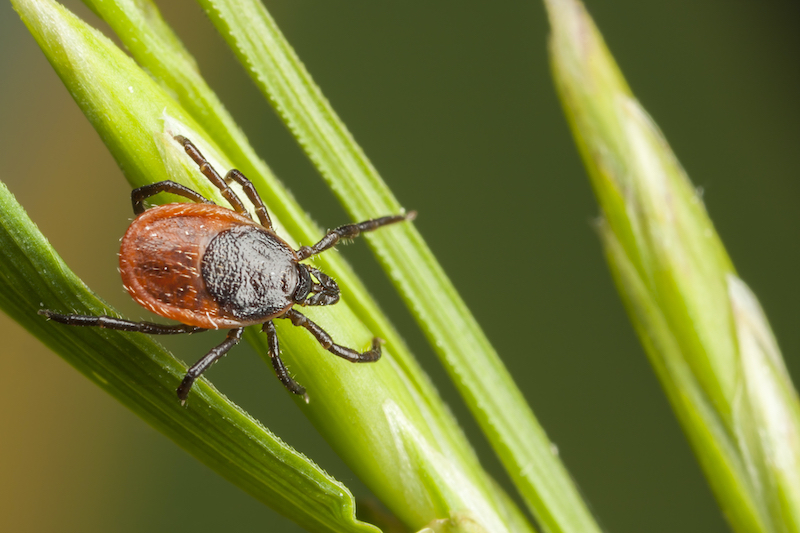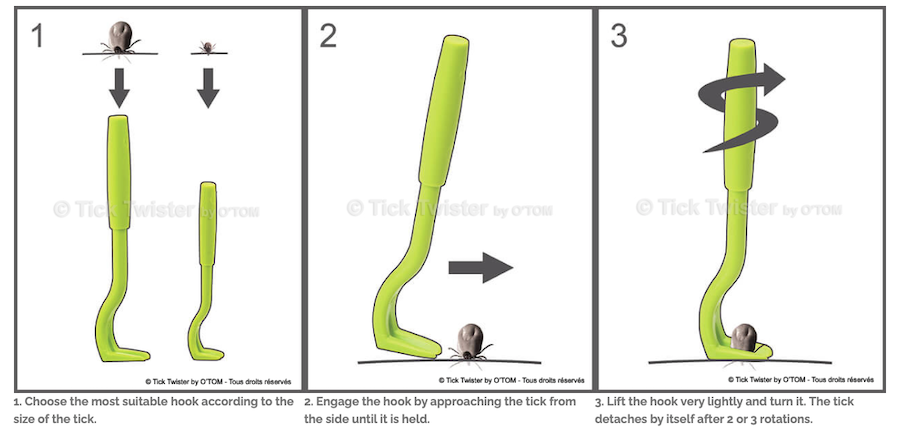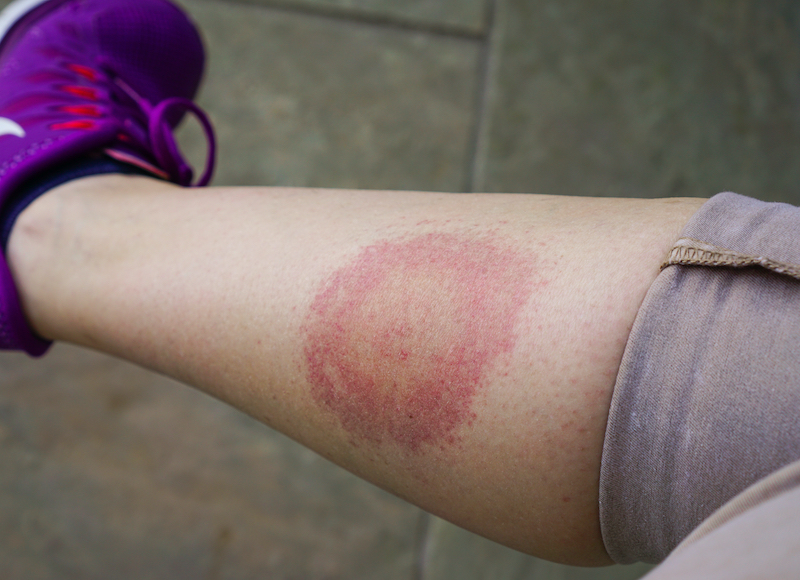My cousin once “acquired” a tick – it attached itself to the underside of his big toe and no-one noticed until it fell off on his bedroom carpet, completely sated – goodness knows how long it had been there. I remember being absolutely horrified, but thankfully he didn’t get any nasty after effects!
As the days get lighter and longer we’ll all be out exploring the countryside again, and enjoying the fresh air on family walks. Unfortunately, it's also prime tick season and with the recent wet weather, tick bites and tick-borne illnesses such as Lyme disease are expected to be more common. Tick Bite Prevention Week takes place on 25th-31st March this year, so we thought you might like to know a bit more about the little blighters and the illnesses they carry.
So what are ticks and where are they found?
Ticks are small, spider-like creatures which feed on the blood of birds and mammals, including humans. They vary in size, usually between 1mm to 1cm long and they have either six or eight legs. They can be brown, grey or black in colour (or a mixture of these colours). They are found all over the UK, usually in woodland and moorland areas, although they can be found in urban parks and gardens, especially where long grass is present. They do not fly or jump but climb on to animals or humans as they brush past, attaching themselves to our skin. Once a tick bites into the skin, it feeds on blood for a few days before dropping off.

What does a tick bite feel like?
Tick bites aren't usually painful. You might not even know you or your child have been bitten until you see the tick attached to the skin. However, in some cases they may cause:
- A red lump where you were bitten
- Swelling
- Itchiness
- Blistering
- Bruising
Children can be more likely to get bitten by a tick – they are more likely to stray from paths into longer grass and woods, more likely to fall into vegetation and more likely to expose more skin during play – somersaults in the long grass anyone?!
I’ve found a tick on my child – how do I safely remove it?
Firstly, you need to remove the tick as soon as possible after you notice it, as this can reduce the risk of getting a tick-borne infection such as Lyme disease (see below).
To safely remove the beastie:
1. Do not try to kill the tick before removal and do not apply any products to the area before removal.
2. Using fine-tipped tweezers or a tick-removal tool , gently grip the tick as close to the skin as possible.
3. Pull slowly and steadily away from the skin without squeezing the tick. Carefully dispose of the tick.
4. Wash the skin where the tick was attached with soap and water.
5. Apply an antiseptic cream to the skin around the bite.
If the tick’s mouthparts break off in the skin and cannot be removed, these may cause local irritation but should fall out naturally in time. If you manage to remove the tick yourself, unless your child is displaying flu-like symptoms there’s no need to go to the doctors.

I’ve removed the tick, but my child has flu symptoms...
This could be an indication they have contracted Lyme disease (a bacterial infection) from an infected tick. Symptoms include:
- A round or oval bull’s eye like rash around the bite which can appear up to 3 months after an infected bite. The rash is usually flat or slightly raised, and pink, red or purple – on darker skin it may resemble a bruise. It may get bigger over several days or weeks, and can appear on different parts of the body.
- A high temperature, or feeling hot and shivery.
- A headache.
- Muscle and joint pain.
- Tiredness and loss of energy.
- Neck stiffness.

If you suspect Lyme disease, see your GP as soon as possible. It’s much easier to treat if it is diagnosed early. The GP will ask questions about whether your child could have recently been bitten and will carry out blood tests to confirm or rule out Lyme disease – however this isn’t always accurate. Your GP is likely to prescribe antibiotics even if the test is negative and your child is still displaying symptoms. It’s a long course but very important to finish the 28 days prescribed. This will help avoid more serious complications of Lyme disease which can include:
- Pain and swelling in the joints.
- Nerve problems – such as numbness or pain in your limbs.
- Memory problems.
- Difficulty concentrating.
- Heart problems.
- Post-infectious Lyme disease, which can cause symptoms similar to Chronic Fatigue Syndrome.
Please be aware that some websites offer tests and treatments for Lyme disease that might not be scientifically proven. Your best bet is to visit your local GP, or ring 111 if you need advice.
How can my family prevent tick bites?
Don’t be put off from the great outdoors! Fresh air and exercise has so many benefits and there are things you can do to minimise the risk from ticks:
- Keep to footpaths and avoid long grass when out walking.
- Wear appropriate clothing (a long-sleeved shirt and trousers tucked into your socks), especially if walking through long grass.
- Wear light-coloured fabrics that may help you spot a tick on your clothes.
- Use insect repellent on exposed skin.
- Check your children's head and neck areas, including their scalp as well as any other exposed skin – ankles and lower legs are particularly vulnerable to ticks.
- Make sure ticks are not brought home on your clothes.
- Check that pets do not bring ticks into your home in their fur.
- Invest in a tick tool such as this one.
- Keep antiseptic cream in your medicine cabinet.
Well here’s hoping you never have to encounter one of these critters, but at least now you’re ready to cope if a tick decides to make your child’s skin its home – eek!
Charlotte @ Mini First Aid xx
Sources: NHS UK, NHS Inform, Lyme Disease Action, O'TOM Tick Twister
Buy your Tick Twister here
The Tick Twister is a must-have for camping and outdoor adventures, providing a safe, quick, and painless way to remove ticks. Each pack includes three sizes to handle adult ticks, nymphs, and larvae. Compact and easy to carry, it’s ideal for first aid kits or rucksacks. Designed to remove ticks completely in one go, it also helps reduce the risk of Lyme disease transmission.








